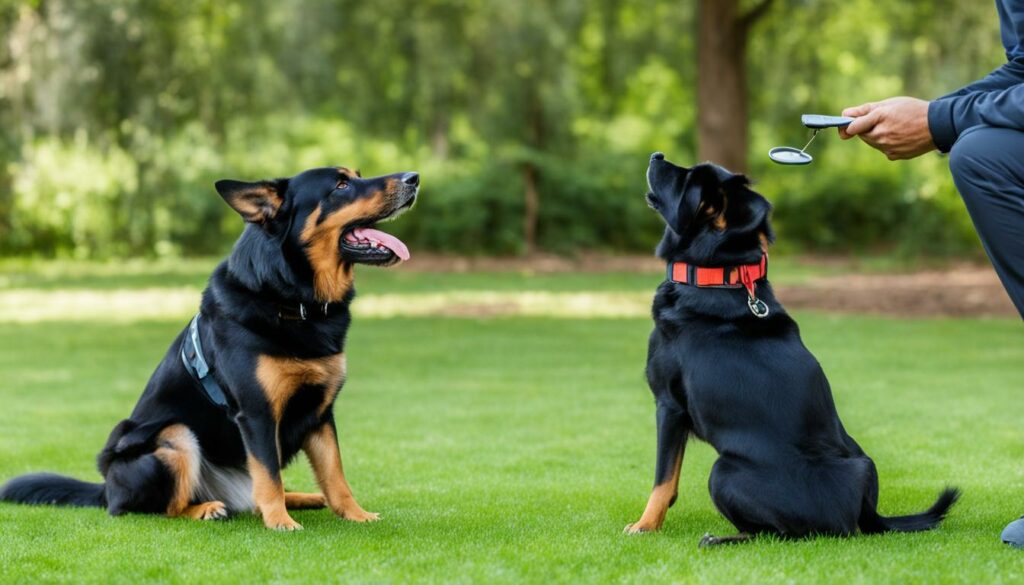Table of Contents
Training a rescue dog can be a rewarding but challenging experience. These dogs may come with a history of trauma, neglect, or inconsistent training, requiring patience, understanding, and positive reinforcement. This guide provides 10 effective tips for training a rescue dog to help them adapt and thrive in their new home.

Establish Trust and Build a Bond
Before beginning formal training, it’s crucial to establish trust and build a bond with your rescue dog. Spend quality time together through play, walks, and gentle petting. This foundation of trust will make training more effective and enjoyable for both of you. For more on building trust, visit our Building Trust with Rescue Dogs guide.
Be Patient and Understanding
Patience is key when training a rescue dog. These dogs may have experienced trauma or inconsistent training, leading to behavioral issues. Understand that progress may be slow and setbacks are normal. Celebrate small victories and remain patient throughout the process.
Use Positive Reinforcement
Positive reinforcement is an effective method for training a rescue dog. Reward your dog with treats, praise, and affection for displaying desired behaviors. Avoid punishment, as it can reinforce fear and anxiety. For tips on positive reinforcement, see our Positive Reinforcement Training guide.
Establish a Consistent Routine
Consistency is crucial for training a rescue dog. Establish a routine for feeding, walks, playtime, and training sessions. A consistent schedule helps your dog understand what to expect and reduces anxiety. For more on establishing routines, visit our Consistent Dog Training guide.
Start with Basic Commands
Begin training with basic commands such as “sit,” “stay,” and “come.” These commands form the foundation for good behavior and make it easier to teach more complex commands later. Keep training sessions short and positive to maintain your dog’s interest. For a step-by-step guide, see our Basic Dog Commands guide.
Socialize Your Dog
Socialization is important for a rescue dog to become comfortable around other animals and people. Gradually expose your dog to new experiences in a controlled and positive manner. Start with low-stress environments and slowly introduce more stimuli. For socialization tips, visit our Dog Socialization guide.
Address Behavioral Issues
Rescue dogs may exhibit behavioral issues such as separation anxiety, aggression, or fearfulness. Address these issues with patience and, if needed, consult a professional dog trainer or behaviorist. For advice on common behavioral problems, see our Addressing Behavioral Issues guide.
Provide Mental Stimulation
Mental stimulation is essential for a rescue dog’s well-being. Engage your dog with puzzle toys, training games, and new activities to keep their mind active and prevent boredom. For ideas, visit our Mental Stimulation for Dogs guide.
Use Gentle Handling
Handle your rescue dog gently and with care, especially if they have a history of abuse or neglect. Avoid sudden movements or loud noises that could startle them. Gentle handling builds trust and helps your dog feel safe and secure in their new environment.
Seek Professional Help if Needed
If you encounter significant challenges while training your rescue dog, consider seeking help from a professional dog trainer or behaviorist. They can provide personalized guidance and support to address specific issues. For tips on finding the right professional, visit our Finding a Dog Trainer guide.
Conclusion: Training a Rescue Dog
Training a rescue dog requires patience, consistency, and positive reinforcement. By following these effective tips for training a rescue dog, you can help your new pet adapt and thrive in their new home. For more resources on dog training and care, visit our Dog Training and Care section.
Frequently Asked Questions about Training a Rescue Dog
How long does it take to train a rescue dog?
The time it takes to train a rescue dog varies depending on the dog’s background and the consistency of training. Some dogs may adjust within a few weeks, while others may take several months. For more information, visit PetMD.
What should I do if my rescue dog has separation anxiety?
Separation anxiety is common in rescue dogs. To address it, create a safe space for your dog, gradually increase alone time, and use calming aids if necessary. For more tips, visit The Spruce Pets.
How can I socialize my rescue dog?
Socialize your rescue dog by gradually exposing them to new experiences, people, and other animals. Start with low-stress environments and slowly introduce more stimuli. For socialization tips, visit AKC.
Is professional training necessary for rescue dogs?
Professional training can be beneficial, especially if you encounter significant challenges. A professional trainer can provide personalized guidance and support. For more information, visit The Spruce Pets.
How can I build trust with my rescue dog?
Build trust by spending quality time together, using positive reinforcement, and being patient. Avoid punishment and handle your dog gently. For more tips, visit AKC.











